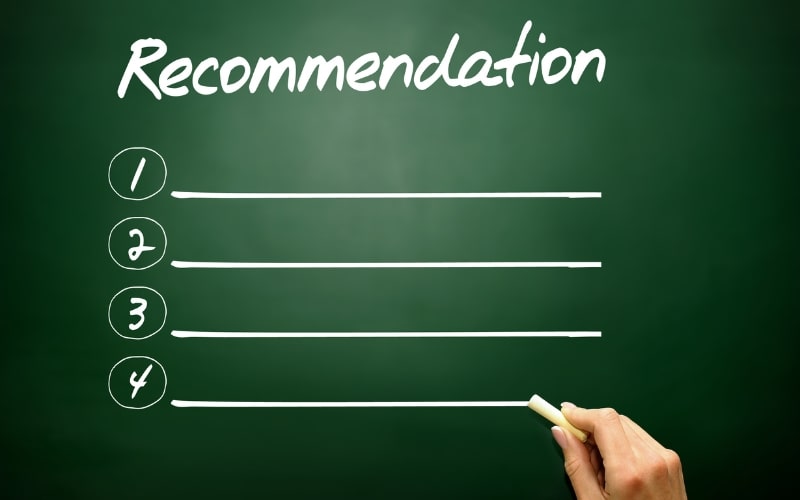Email marketing has emerged as a crucial strategy for e-commerce businesses aiming to boost engagement, increase traffic, and drive sales. Among the various tactics available, incorporating product recommendations in your emails stands out as a highly effective method. This approach leverages personalized content to cater to individual customer preferences, resulting in higher open rates, click-through rates, and ultimately, conversions. In this comprehensive guide, we’ll delve into the significance of product recommendations, how to implement them, and the best practices to follow for maximizing their impact.
Understanding the Importance of Product Recommendations
Product recommendations are personalized suggestions of items that a customer might be interested in based on their past behavior, preferences, and purchase history. The main advantages of incorporating product recommendations in your email marketing strategy include:
- Enhanced Personalization: Personalized emails resonate more with recipients, making them feel valued and understood. This connection can lead to increased loyalty and repeat purchases.
- Improved Engagement: Emails with personalized content, such as product recommendations, tend to have higher open and click-through rates. Customers are more likely to engage with content that is relevant to their interests.
- Higher Conversion Rates: By suggesting products that align with a customer’s preferences, you increase the likelihood of them making a purchase. This targeted approach can significantly boost your conversion rates.
- Increased Average Order Value: Recommending complementary or higher-priced items can encourage customers to spend more, thus increasing the average order value.
- Reduced Cart Abandonment: Reminding customers of items they showed interest in can entice them to complete their purchase, thereby reducing cart abandonment rates.
Types of Product Recommendations

When integrating product recommendations into your emails, it’s important to understand the different types you can use. Each type serves a unique purpose and can be tailored to various stages of the customer journey:
- Best Sellers: Highlighting your best-selling products can attract customers by showcasing popular and trending items. This approach leverages social proof and the fear of missing out (FOMO).
- Recently Viewed Items: Reminding customers of products they’ve recently viewed can rekindle their interest and nudge them towards making a purchase.
- New Arrivals: Introducing new products in your email can generate excitement and curiosity, especially among loyal customers who are always on the lookout for the latest offerings.
- Frequently Bought Together: Suggesting complementary products that are often purchased together can encourage customers to buy multiple items, increasing their cart value.
- Personalized Recommendations: Using data on a customer’s browsing history, purchase history, and preferences to suggest products tailored specifically for them can make your emails more relevant and compelling.
Implementing Product Recommendations in Your Emails
To effectively incorporate product recommendations into your email marketing strategy, follow these steps:
- Leverage Customer Data: Collect and analyze data on your customers’ behaviors, preferences, and purchase history. This data forms the foundation for personalized recommendations.
- Choose the Right Tools: Utilize email marketing platforms and tools that offer advanced personalization features. Many platforms come with built-in algorithms for generating product recommendations.
- Segment Your Audience: Segment your email list based on various criteria such as past purchases, browsing behavior, and demographics. This allows you to tailor recommendations more accurately.
- Design Visually Appealing Emails: Ensure your emails are visually appealing and easy to navigate. Use high-quality images, clear call-to-action buttons, and concise, persuasive copy.
- Test and Optimize: Continuously test different types of recommendations, email designs, and content strategies. Use A/B testing to determine what resonates best with your audience and optimize accordingly.
Best Practices for Product Recommendations in Emails
To maximize the effectiveness of your product recommendations, adhere to the following best practices:
- Keep it Relevant: Ensure that the recommended products are relevant to the recipient’s interests and needs. Irrelevant recommendations can lead to disengagement.
- Limit the Number of Recommendations: Avoid overwhelming customers with too many recommendations. A curated selection of 3-5 items is often sufficient.
- Use Dynamic Content: Dynamic content allows for real-time updates of product recommendations based on the latest data. This ensures that your emails are always up-to-date with the most relevant suggestions.
- Incorporate Social Proof: Highlight customer reviews, ratings, and testimonials for the recommended products. Social proof can significantly influence purchasing decisions.
- Personalize Subject Lines: Personalizing the subject line with the recipient’s name and a hint of the recommended products can increase open rates.
- Monitor Performance Metrics: Track key performance metrics such as open rates, click-through rates, conversion rates, and revenue generated from recommended products. Use these insights to refine your strategy.
Real-Life Examples of Successful Product Recommendation Emails
To illustrate the power of product recommendations, let’s explore a few real-life examples:
- Amazon: Amazon is a pioneer in personalized product recommendations. Their emails often include items based on the customer’s browsing history, purchase history, and items left in the cart. This approach has contributed significantly to their high conversion rates.
- Spotify: Spotify sends personalized emails recommending playlists and albums based on the user’s listening history. This keeps users engaged and encourages them to explore new music.
- Sephora: Sephora’s emails often feature product recommendations based on the customer’s past purchases and preferences. They also include complementary products that enhance the customer’s experience.
Challenges and Solutions in Implementing Product Recommendations

While product recommendations can be highly effective, there are several challenges you might encounter:
- Data Privacy Concerns: Collecting and using customer data requires compliance with data privacy regulations. Ensure that your data collection practices are transparent and that you obtain necessary consents from customers.
- Data Quality: Inaccurate or incomplete data can lead to irrelevant recommendations. Invest in data cleansing and validation processes to maintain high data quality.
- Technical Integration: Integrating recommendation engines with your email marketing platform can be technically challenging. Work with experienced developers or use platforms that offer seamless integration.
- Resource Intensive: Creating personalized recommendations can be resource-intensive in terms of time and effort. Automate as much of the process as possible to improve efficiency.
Future Trends in E-commerce Email Marketing
The landscape of e-commerce email marketing is constantly evolving. Here are some future trends to watch out for:
- Artificial Intelligence and Machine Learning: AI and machine learning will continue to play a significant role in enhancing product recommendations. These technologies can analyze vast amounts of data to generate more accurate and timely suggestions.
- Hyper-Personalization: As customers expect more personalized experiences, hyper-personalization will become the norm. This involves using real-time data and predictive analytics to deliver highly tailored content.
- Interactive Emails: Interactive elements such as quizzes, surveys, and carousels can make emails more engaging. Incorporate interactive features to capture customer attention and provide a dynamic experience.
- Omnichannel Integration: Integrating email marketing with other channels such as social media, SMS, and in-app notifications can create a cohesive and seamless customer experience.
Conclusion
Incorporating product recommendations in your emails is a powerful strategy for e-commerce businesses aiming to enhance personalization, engagement, and sales. By leveraging customer data, choosing the right tools, and following best practices, you can create compelling emails that resonate with your audience and drive conversions. As the e-commerce landscape continues to evolve, staying abreast of emerging trends and technologies will help you maintain a competitive edge and achieve sustained success. Thus, improving traffic and sales for your website. Read more on the other reasons why your website isn’t getting traffic.


